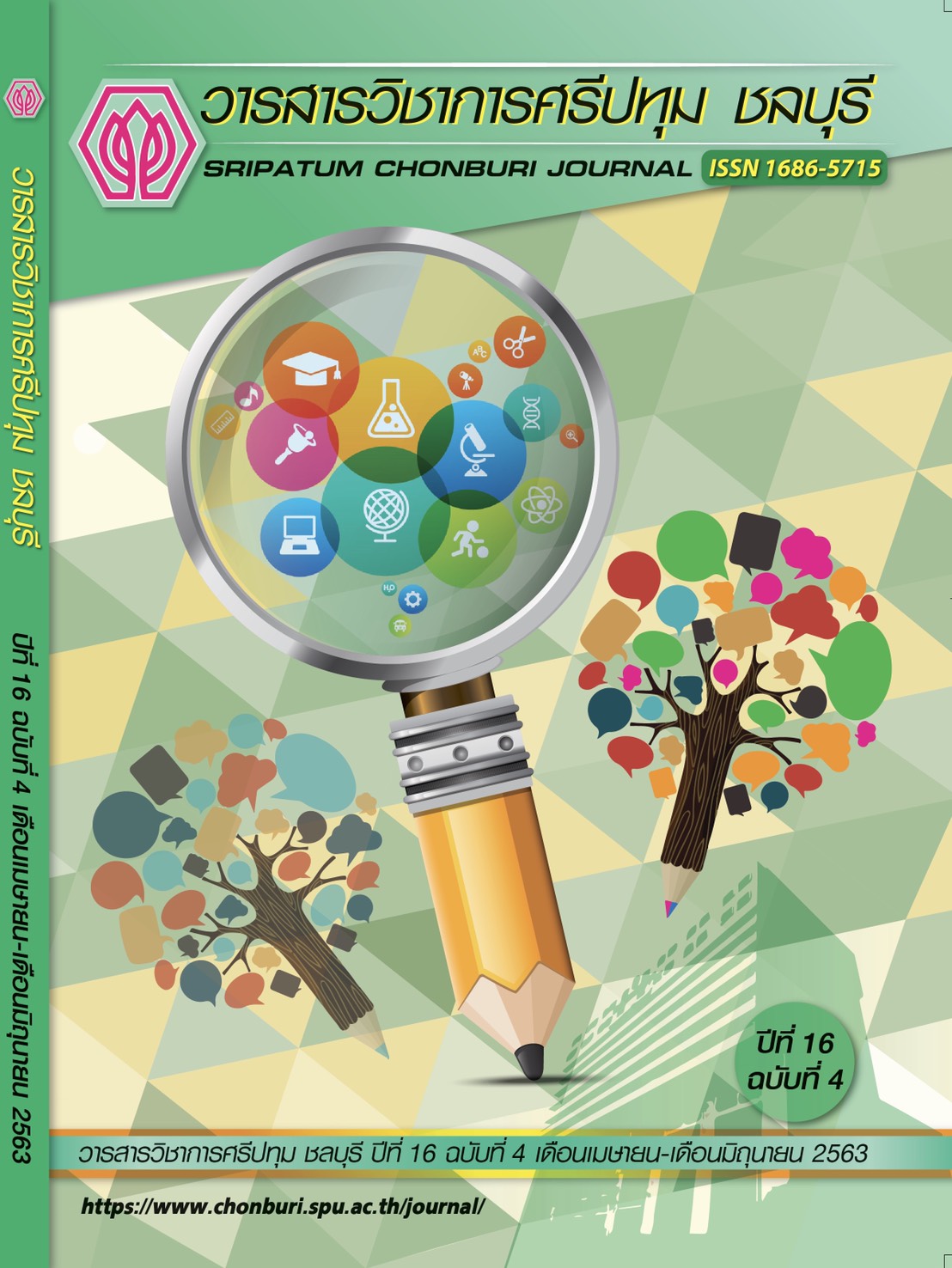A COMPARATIVE STUDY OF CHINESE AND THAI EUPHEMISM
Keywords:
euphemism,, offensive word,, language structure,, Thai language,, Chinese language.Abstract
Euphemism is an integral part of the language, is an important linguistic and cultural phenomenon in human society. In order to avoid causing unnecessary misunderstandings, conflict, embarrassment, and guilt by using the relatively abstract, indirect method or the metaphor according to the different language communication scenarios. Euphemism help to establish a close relationship between cultural exchanges and cooperation between countries. Euphemism played an excellent effect. Because it is not only widely used in the daily life of language communication but also used in literary works and other works of art. So far, there are a lot of the use and research results of Chinese euphemism, but Chinese and Thai language, especially the comparative study of Chinese and Thai Euphemism field, is relatively rare.
Finally, through the comparison and comparative study of Chinese and Thai Euphemism, we found that it has the same euphemistic expression and different ways of expression - such as physiological and social euphemism in Chinese and Thai euphemism. They have the same euphemistic expressions, and with religion, royalty or gay-related euphemisms in Chinese and Thai euphemistic expressions have their unique euphemistic expressions. Also, politeness, taboos, innovation, avoid vulgarly, and self-protection is an essential component of the causes of Chinese and Thai euphemism.
References
ทัศนีวัลย์ ศรีมันตะ และธนานันท์ ตรงดี. (2556). กลวิธีสร้างถ้อยคำรื่นหูในภาษาไทยและภาษาจีนกลางในปัจจุบัน. มหาสารคาม: ภาควิชาภาษาตะวันออก มหาวิทยาลัยมหาสารคาม.
ประคอง นิมมานเหมินท์ และคณะ. (2552). หนังสืออุเทศภาษาไทย. กรุงเทพฯ: สำนักพิมพ์องค์การค้า สกสค.
ประภาศรี สีหอำไพ. (2550). วัฒนธรรมทางภาษา. กรุงเทพฯ: ห้างหุ้นส่วนจำกัดสามลดา.
พิมพาภรณ์ บุญประเสริฐ. (2550). คำที่แสดงความสุภาพในภาษาไทย. กรุงเทพฯ: คณะมนุษศาสตร์ มหาวิทยาลัยศรีนครินทรวิโรฒ..
มลฤดี ลาพิมล. (2553). ภาษาเพศในสังคมไทย. กรุงเทพฯ: สุทธิสารการพิมพ์.
ราชบัณฑิตยสถาน. (2550). พจนานุกรมคำใหม่ เล่ม 1 ฉบับราชบัณฑิตยสถาน. กรุงเทพฯ: ราชบัณฑิตยสถาน.
_______. (2552). พจนานุกรมคำใหม่ เล่ม 2 ฉบับราชบัณฑิตยสถาน. กรุงเทพฯ: ราชบัณฑิตยสถาน.
_______. (2561). พจนานุกรมคำใหม่ เล่ม 3 ฉบับราชบัณฑิตยสถาน. กรุงเทพฯ: ราชบัณฑิตยสถาน.
รัชดา ธิยะใจ. (2536). คำรื่นหูในภาษาไทย: การวิเคราะห์ค่านิยม. วิทยานิพนธ์ศิลปศาสตรมหาบัณฑิต สาขาวิชาภาษาไทย, บัณฑิตวิทยาลัย มหาวิทยาลัยสงขลานครินทร์.
ลินจง จันทรวราทิตย์. (2542). วรรณคดีวิจารณ์. นครปฐม: ภาควิชาภาษาไทย สถาบันราชภัฏนครปฐม.
วิศัลย์ศยา รุดดิษฐ์. (2555). ความเกี่ยวข้องระหว่างวัฒนธรรมกับภาษา (ออนไลน์). เข้าถึงได้จาก: https://curadio.chula.ac.th/Images/Class-Onair/th/2012/th-2012-06-14.pdf [2562, 1 มีนาคม]
Hayakawa, S. I. (2522). Language in thought and action. New York, NY: Harper and Row.
Stern, G. (2527). Meaning and change of meaning. London, UK: Indiana University Press.
常敬宇. (2009年). 汉语词汇文化. 北京: 北京大学出版社.
陈望道. (2008年). 修辞学发凡. 上海: 复旦大学出版社.
黄伯荣、廖序. (2007年). 东现代汉语. 北京: 高等教育出版社.
李军华. (2010年). 汉语委婉语研宄. 北京: 中国社会科学出版社.
刘瑞琴、韩淑斧. (2017年). 英汉委婉语对比与翻译. 银川: 宁夏人民出版社.
陈氏碧香. (2018年). 汉越委婉语对比研究. 上海: 华东师范大学.
庞兆勒. (2019年). 汉语委婉语构成方式研究. 新疆: 新疆师范大学.
贾建梅. (2016年). 汉日委婉语对比研究. 黑龙江: 黑龙江大学.
李红华. (2011年). 泰语语言禁忌研究. 广西: 广西民族大学.
王宁. (2007年). 委婉语使用的社会语言学研究. 北京: 北京.北京交通大学.
Downloads
Published
Issue
Section
License
บทความทุกบทความเป็นลิขสิทธิ์ของวารสารวิชาการศรีปทุม ชลบุรี



